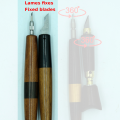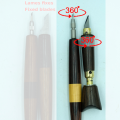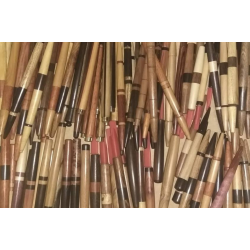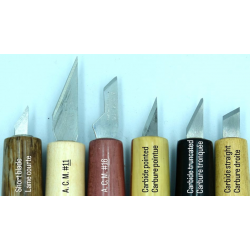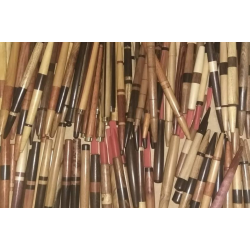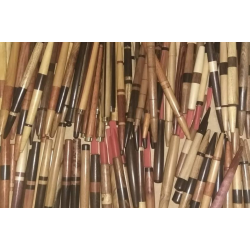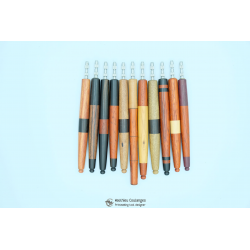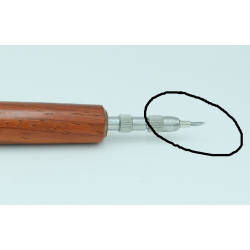Cutters, scalpels
Scalpels and other cutting tools come in 3 main categories: fixed blades, free rotating blades, and directed moving blades. All blades are removable to be changed when worn out.
Conventional tools (fixed blades)
- Precision tungsten carbide cutter. Small, very hard tungsten carbide blade, suitable for all thin materials (paper, plastics, etc.). The flared shape of the blade makes it unsuitable for thick materials.
- Scalpel blade holder. Allows the use of the majority of classic scalpel blades (in particular Swann Morton A.C.M. n°11, 16). I also offer tungsten carbide blades that are much sharper and more durable, but more brittle. The tungsten carbide blades are available in versions for paper, cardboard, leather, wood, lino
Swivel cutter/scalpel (unrestricted rotating blade)
The blade is mounted on a ball bearing mechanism. You have to use the tool like a pen without thinking about the blade. The blade positions itself naturally to follow the gesture. This mechanism allows in particular a lot of freedom, and to round off the gesture to make beautiful curves. But provides less precision than a fixed blade to precisely follow an already existing line.
- Swivel cutter 360. It is the same blade as precision cutters, very hard in tungsten carbide, suitable for all thin materials (paper, plastics, etc.). The flared shape of the blade makes it unsuitable for thick materials.
- Swivel Cutter/Scalpel Mechanism heavier than the swivel cutter. It is the same handle as the intaglio roulette. It allows the use of small carbide blades or scalpel-type blades, allowing the cutting of slightly thicker materials. This type of mechanism loses fluidity with the thickness of the materials.
Swivel scalpel (conduct rotating blade)
The handle is articulated in the middle to be able to have a movable but controlled blade. The pumice and the middle finger are used to control the position of the blade. The index is used to control the pressure on the blade (and therefore the depth of cut). This type of tool is traditionally used for working leather. Classic scalpel blades can be used (in particular Swann Morton A.C.M. n°11, 16). I also offer tungsten carbide blades, which are much sharper, for cutting thick paper, leather, as well as for saving in wood or lino.

Click on any category to filter the products
- 56,00 € (EUR) Available
- 48,00 € (EUR) Available
- 6,00 € (EUR) Available
- 56,00 € (EUR) Available
- 35,00 € (EUR) Available
- 40,83 € (EUR) Available
- 2,08 € (EUR) Available


